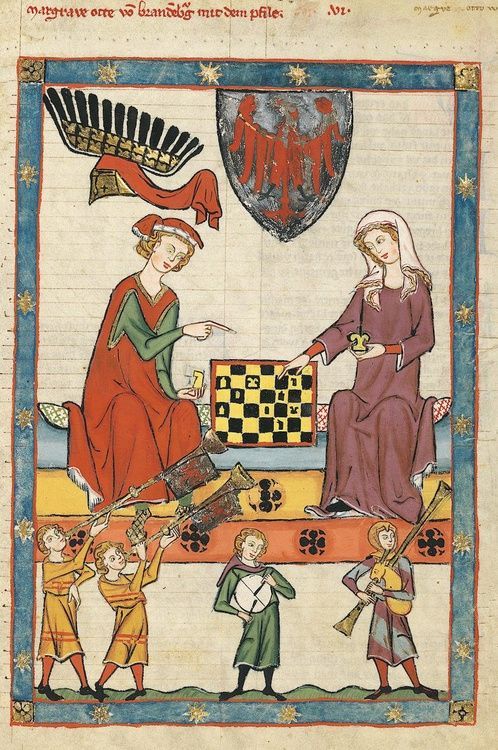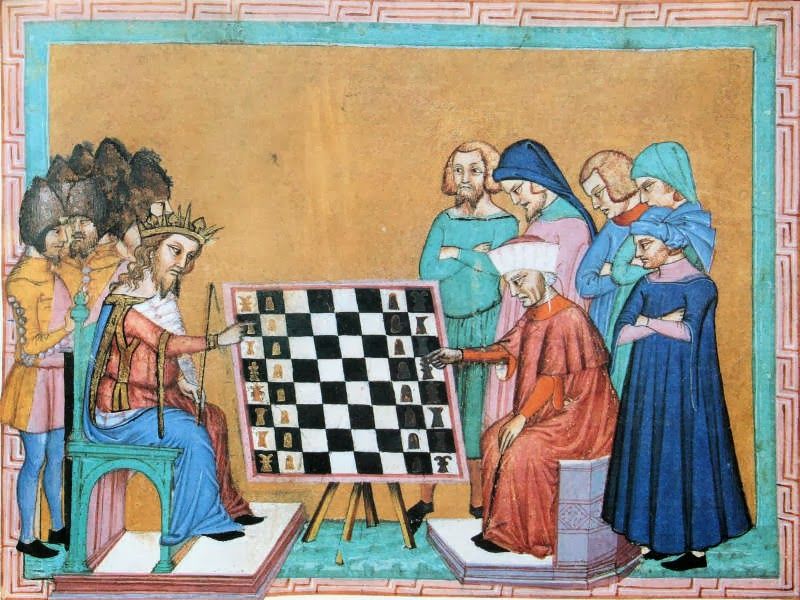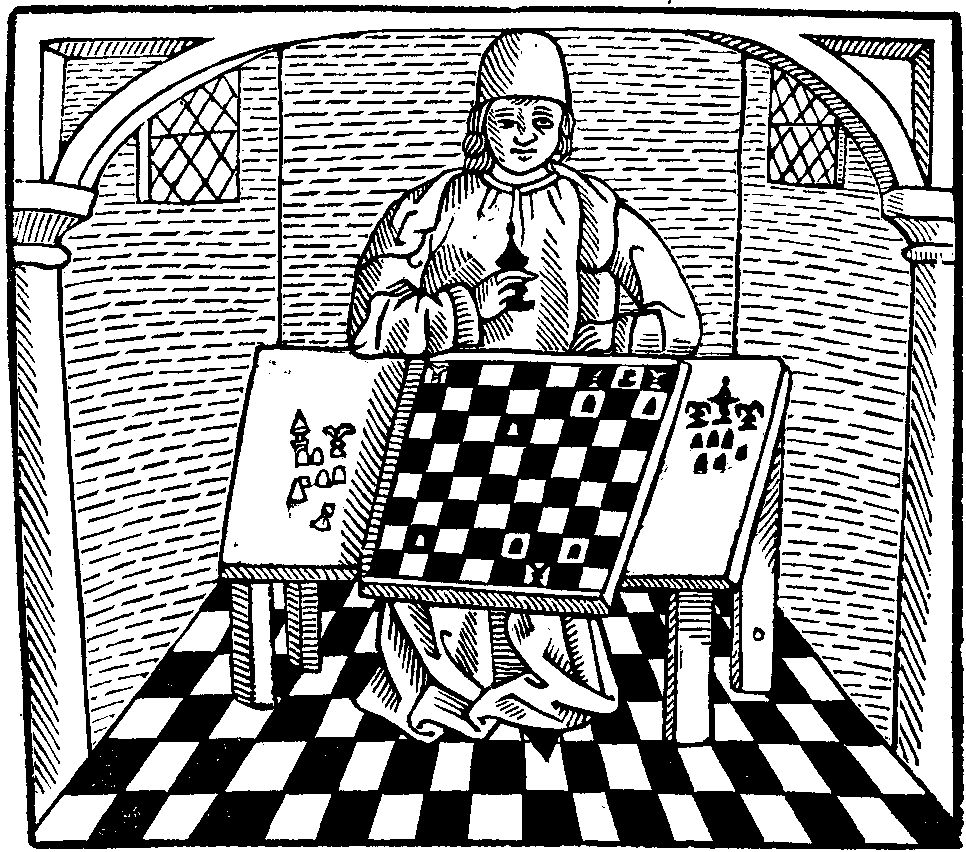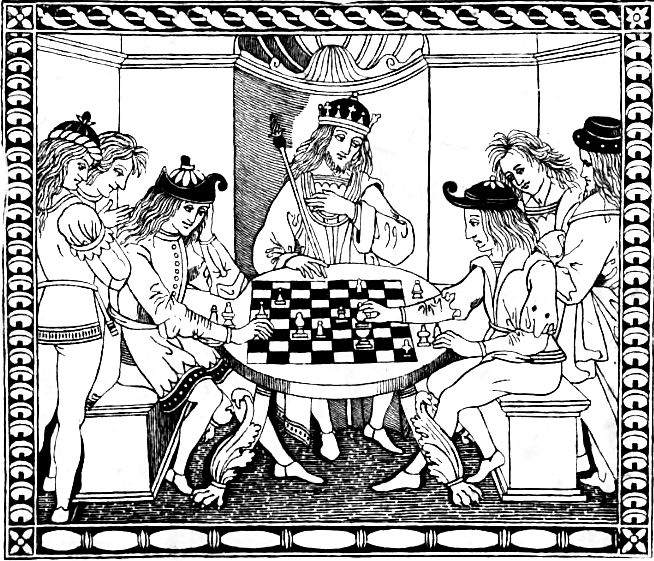A brief note on interpreting manuscript illustrations of chess sets
Early medieval manuscripts were hand-written and were occasionally illustrated with detailed miniatures. Where the text concerned chess the artists often illustrated people playing the game, either in mid-flow or just about to begin. Such pictures are rare but have given a wonderful insight into the pieces of the period. Early medieval chess boards were often painted other than black and white, with yellow, blue and red often used. The chess pieces themselves were also often painted. This practice of polychromy in chess boards and pieces seems to reduce in the fourteenth century, though pieces continue to be red vs. white and red vs. black, as well as black vs. white.

In the mid fifteenth century the printing press allowed multiple copies of books to be produced at a fraction of the cost and time previously required. Because of this many more printed manuscripts have survived, and the number of examples of chess sets from the fifteenth century may be a reflection of this rather than simply an increased diversity of chess sets at this time. With few exceptions printing was in black on white paper and so the colours of the boards and men is assumed to be also black and white. The few paintings of chess being played from the fifteenth through to the early seventeenth century confirm that black and white board and pieces are most common.
When examining medieval illustrations of chess, whether hand painted or printed from woodcuts, it is important to take into account a few problematic areas. First, the artist making preliminary sketches for an illustration or woodcut may have had little knowledge of the chess men themselves, and would possibly have been more concerned with the figures playing or watching. Illustrations of games about to begin have the advantage of showing all the pieces in their starting positions; while games illustrated in mid-play lack this, and rarely, if ever, have a full compliment of pieces, on or off the board. Often the boards have fewer than 8 x 8 squares.

Second, the form of painted miniatures or printing of woodcuts does not always provide the fine detail required for interpretation. Much of the detail simply is not there and reconstructions are partly conjectural.

Third, in most illustrations the view of the chess men is two dimensional, so some element of the three dimensional form is often missing. This is particularly problematic when determining whether a piece is turned or carved.

Fourth, the aim of the illustration was not primarily to display the character and form of the chess pieces, rather, at best, to show the positions of the men on the board, in the case of chess problems, or to display a scene from a narrative in which the people and setting are of foremost importance.

Despite all this there is a wealth of information to be found in the illustrations that have survived, sufficient to reconstruct with some degree of certainty chess sets across the Medieval period. The diagrams in the following pages show schematically our own interpretations of the chess pieces for each period described, on which we have based our reproductions - some of which will be available from time to time in our online shop, while others can be made to commission.
